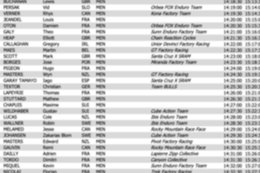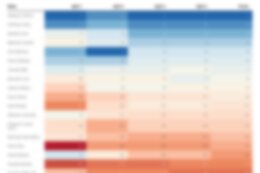Introduction
Hello again and welcome to the second blog of the ‘How the SAC Calendar Transforms Organization and Productivity’ blog series. In the previous blog I discussed the following:
What is the SAC Calendar?Tasks – the different type of tasks, start-by options & calendar roles
In this blog, I want to focus on the SAC planning process within the SAC calendar. Specifically:
What is the SAC calendar planning process?Use Case – I this is the best way to get an understanding of how effective the SAC calendar process is for a business.
What is the SAC calendar planning process?
A calendar process is an integration of all events the process contains whether tasks or other processes. A calendar process provides a high-level view of work completed and work remaining.
In this blog, I am going to use the following use case, to walkthrough how a calendar process can help a business:
Gain real-time progress monitoring: The calendar provides visibility into the status of tasks and projects, enabling task/ process owners to track progress in real-time. This helps in identifying potential bottlenecks early and taking corrective actions promptly. Enhance their workflow organization: The planning process in the SAC calendar allows businesses to create, manage, and monitor tasks systematically. This improves the structure and clarity of workflows, ensuring all team members understand their responsibilities and deadlines.Automation of Processes: The SAC calendar planning process can automate repetitive tasks and processes, such as data locking. This reduces the manual burden on team members, allowing them to focus their time on other tasks.
Use Case
Overview:
ABC Ltd. faced challenges in coordinating its annual budget planning. To streamline the process, they implemented SAC’s calendar planning process feature. Jane, a data analyst, set up the “Annual Budget Planning” process, assigning tasks for each region to submit budget data by October 14th, review by October 21st, and final consolidation by October 31st. Dependencies ensured smooth task flow, and automated reminders kept everyone on track. This system improved efficiency, collaboration, and data accuracy, enabling ABC Ltd. to complete its budget on time with fewer errors. Once Jane contacted relevant stakeholders to confirm dates and deadlines, she took the following steps in order to set up a calendar process to help with the Annual Budget Planning.
Breakdown of Activities:
Initial set up of the calendar process:Within SAC, Jane goes to the calendar sectionShe selects and creates a process named ‘Annual Budget Planning’Define the overall timeline of this process. In this scenario, the overall start date will be October 1st – October 31st.
Define tasksJane wants to create several general tasks which she can assignee to each region, for them to submit their relevant data. All these general tasks have a start date of October 1st and an end date of October 14th.Once October 14th comes around, the general tasks will end and the status of these tasks will be successful. The successful completion of these tasks will trigger the review task to start. The review task will now be opened by the designated reviewer to review the data submitted by each region for each general task. The review task will end by October 21st.A final review task will trigger to start after October 21st. The finance team will get until the 31st October to review the previous review task. This will be the final review and consolidation of the data submitted by each region, ensuring all data is accurate and complete. Jane will be notified that the overall planning process is complete
Set up in the Calendar:
Once this process is set up successfully, this is what this planning process will look like in the SAC Calendar:
Result
By leveraging the SAC calendar, Jane enabled ABC Ltd. to manage tasks and deadlines effectively, enhancing overall workflow organization and productivity.
Conclusion
In this blog, we explored how the SAC calendar planning process can significantly enhance business efficiency and productivity. By automating tasks in a process, any business like ABC Ltd. can create workflows such as annual budget planning with ease. With real-time progress monitoring, enhanced workflow organization, and better project collaboration, the SAC calendar ensures that tasks are completed accurately and on time. The SAC calendar proves to be an essential tool for optimizing business processes.
IntroductionHello again and welcome to the second blog of the ‘How the SAC Calendar Transforms Organization and Productivity’ blog series. In the previous blog I discussed the following:What is the SAC Calendar?Tasks – the different type of tasks, start-by options & calendar rolesIn this blog, I want to focus on the SAC planning process within the SAC calendar. Specifically:What is the SAC calendar planning process?Use Case – I this is the best way to get an understanding of how effective the SAC calendar process is for a business. What is the SAC calendar planning process?A calendar process is an integration of all events the process contains whether tasks or other processes. A calendar process provides a high-level view of work completed and work remaining.In this blog, I am going to use the following use case, to walkthrough how a calendar process can help a business:Gain real-time progress monitoring: The calendar provides visibility into the status of tasks and projects, enabling task/ process owners to track progress in real-time. This helps in identifying potential bottlenecks early and taking corrective actions promptly. Enhance their workflow organization: The planning process in the SAC calendar allows businesses to create, manage, and monitor tasks systematically. This improves the structure and clarity of workflows, ensuring all team members understand their responsibilities and deadlines.Automation of Processes: The SAC calendar planning process can automate repetitive tasks and processes, such as data locking. This reduces the manual burden on team members, allowing them to focus their time on other tasks. Use CaseOverview:ABC Ltd. faced challenges in coordinating its annual budget planning. To streamline the process, they implemented SAC’s calendar planning process feature. Jane, a data analyst, set up the “Annual Budget Planning” process, assigning tasks for each region to submit budget data by October 14th, review by October 21st, and final consolidation by October 31st. Dependencies ensured smooth task flow, and automated reminders kept everyone on track. This system improved efficiency, collaboration, and data accuracy, enabling ABC Ltd. to complete its budget on time with fewer errors. Once Jane contacted relevant stakeholders to confirm dates and deadlines, she took the following steps in order to set up a calendar process to help with the Annual Budget Planning. Breakdown of Activities:Initial set up of the calendar process:Within SAC, Jane goes to the calendar sectionShe selects and creates a process named ‘Annual Budget Planning’Define the overall timeline of this process. In this scenario, the overall start date will be October 1st – October 31st. Define tasksJane wants to create several general tasks which she can assignee to each region, for them to submit their relevant data. All these general tasks have a start date of October 1st and an end date of October 14th.Once October 14th comes around, the general tasks will end and the status of these tasks will be successful. The successful completion of these tasks will trigger the review task to start. The review task will now be opened by the designated reviewer to review the data submitted by each region for each general task. The review task will end by October 21st.A final review task will trigger to start after October 21st. The finance team will get until the 31st October to review the previous review task. This will be the final review and consolidation of the data submitted by each region, ensuring all data is accurate and complete. Jane will be notified that the overall planning process is complete Set up in the Calendar:Once this process is set up successfully, this is what this planning process will look like in the SAC Calendar: ResultBy leveraging the SAC calendar, Jane enabled ABC Ltd. to manage tasks and deadlines effectively, enhancing overall workflow organization and productivity. ConclusionIn this blog, we explored how the SAC calendar planning process can significantly enhance business efficiency and productivity. By automating tasks in a process, any business like ABC Ltd. can create workflows such as annual budget planning with ease. With real-time progress monitoring, enhanced workflow organization, and better project collaboration, the SAC calendar ensures that tasks are completed accurately and on time. The SAC calendar proves to be an essential tool for optimizing business processes. Read More Technology Blogs by Members articles
#SAP
#SAPTechnologyblog















+ There are no comments
Add yours